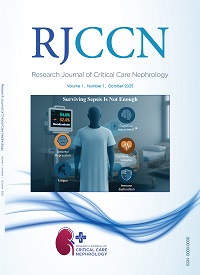Association Between Lipid-related Parameters and the Carotid Intima-media Thickness, Relating to Type 2 Diabetes Mellitus
DOI:
https://doi.org/10.60186/RJCCN.12Abstract
Introduction. Higher carotid intima-media thickness (CIMT),
indicates a greater burden of subclinical atherosclerosis (AS) and
cardiovascular disease (CVD). The AS is related to insulin resistance
and lipid oxidation. Detection of reliable and affordable surrogate
markers and metabolic components for assessing the CVD risk
is world-shaking. This study aimed to inspect the relationship
between lipid-related parameters and CIMT, considering the
impact of type 2 diabetes mellitus (T2DM).
Methods. This cross-sectional study was conducted on a total
of 244 participants (113 men and 131 women), including 118
diagnosed with diabetes (DM) and 126 without diabetes (non
DM). Duplex ultrasonography parameters, demographic, physical,
biochemical assessments, and lipid-related parameters were
measured. Correlation and linear regression analyses assessed
the relationship between the lipid-related parameters and CIMT.
Results. The DM patients’ levels of triglyceride-glucose (TyG)
index were significantly higher than the non-DM ones, however,
the two groups demonstrated no statistically significant difference
in CIMT levels. CIMT was correlated with low-density lipoprotein
(r = 0.33, P = .033) in the DM group and with age (r = 0.41, P < .001)
in the non-DM group. The multivariate linear regression model
demonstrated age, TyG-BMI, and LDL/HDL ratio as the significant
associates of CIMT, with age having the largest standardized
regression coefficient of 0.311 (P < .001).
Conclusions. The current study revealed direct associations
of CIMT with age, TyG-BMI, and LDL/HDL ratio, taking into
account the DM/non-DM binary among the study participants.





